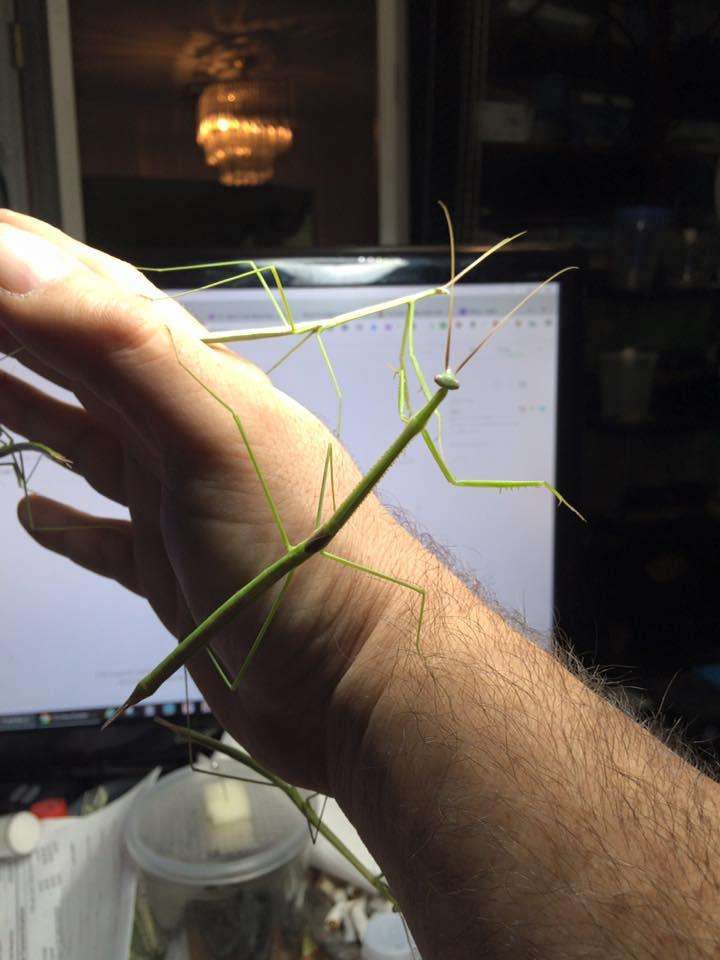


Sold out
Brunneria borealis. North American Stick Mantis. Brunners
$30.00 - $60.00
Brunneria borealis, commonly known as Brunner's mantis, Brunner's stick mantis,or northern grass mantis, is a species of praying mantis native to the Southern United States. It is the only species that reproduces solely through parthenogenesis; no males exist.
Borealis is an elongated green insect with the typical raptorial forelimbs of a mantis. The adults have reduced-size wings and are probably unable to fly. They can grow to about 77 mm (3 in). As you can see here, my adults measure better than 5". Perhaps it's due to the rearing of captive breeds and feeding them.
B. borealis is native to the southern United States,
from the Atlantic Ocean as far west as Texas, where it occurs in Brazos County, Comanche County, and Erath County, probably as separate local populations. It has been recorded in North Carolina, Southern Carolina, Georgia, Florida, Alabama, Louisiana, Mississippi, Arkansas, Oklahoma and Texas. At Austin, Texas, it was found on flowerheads of the slender aster (Symphyotrichum subulatum.[6] At Cedar Creek, Texas, it was found in meadows of little bluestem grass (Schizachyrium scoparium) at night but was unnoticeable by day.
Biology Parthenogenic
This mantis does not breed sexually, and the adults, all female, lay their eggs without the involvement of a male. An ootheca or egg case protects the clutch of eggs. In most mantid species, each mantid nymph emerges from its hole in the egg case, but in this species, one of the ootheca is drawn out into a point, and all the nymphs emerge through this. The nymphs are similar to the adults in appearance and go through a series of molts as they grow.
Mantids are generally ambush predators, but little is known about this mantis's natural diet. It can be found at night about a foot off the ground, climbing higher among the grasses if disturbed. Judging by its size, it probably feeds on grasshoppers, though in captivity, fruit flies and Blue bottle flies are well received.


